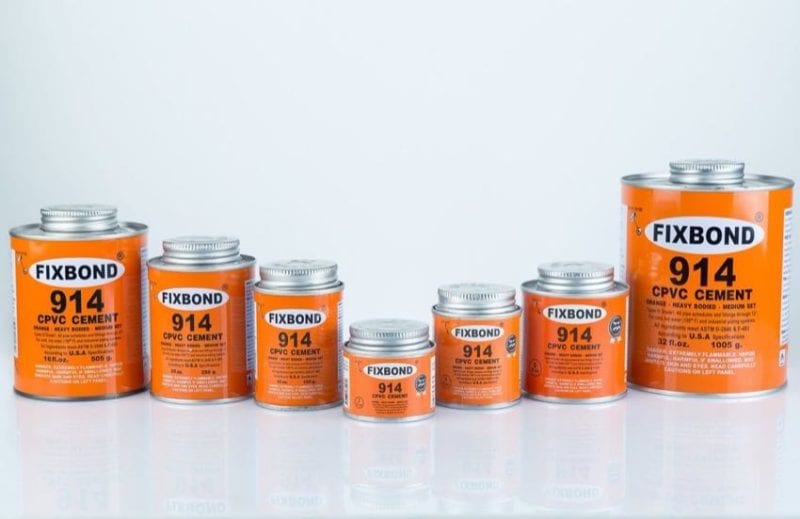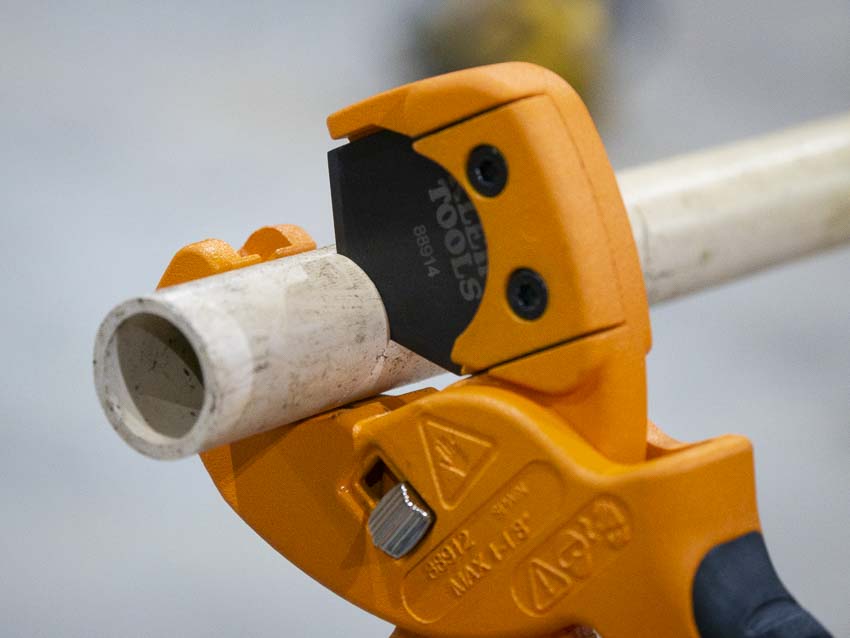CPVC is short for Chlorinated Poly Vinyl Chloride. Of course, that doesn’t tell you much unless you happen to work as a materials scientist. When asked what is CPVC piping, we try to keep it short and sweet. CPVC is a glue (solvent-welded) system that uses piping between 3/8 and 1-1/4 inches. In plumbing, you have a lot of choices. Having covered the differences between CPVC, copper, and PEX tubing, we wanted to focus on the first technology: CPVC and its uses.
Structural Differences Between CPVC and PVC
CPVC is similar to PVC except it goes through another step involving a chlorination process. Treating the material in this way gives it a higher temperature tolerance up to 200 degrees Fahrenheit. Regular PVC should only carry water up to 140 degrees. Since your water heater can raise temperatures to 120 degrees or more, regular PVC should be avoided for hot water lines. We typically see most contractors use PVC for drainage and irrigation, reserving CPVC for whole home water distribution.
Like PVC, CPVC also uses glue on, or solvent-welded, fittings and joints. You can purchase CPVC piping in nominal lengths between 8 and 16 ft. They normally have an ivory color in appearance. Even though the fittings and parts look similar to regular white PVC, the two systems are not compatible. They require a different kind of glue.
CPVC Requires CPVC Glue
Don’t use regular PVC glue or even “universal” glue with CPVC. The high-temperature water they carry can soften non-PVC glue and allow the pieces to separate under high pressure. I’ve seen this enough times not to want to take the risks of a leak. In our neck of the woods, you can easily identify CPVC glue by its yellow or orange colored cans.

Cutting CPVC pipe is somewhat easier than copper or even PEX. Plastic tubing cutters make quick work of cutting most CPVC piping.
What is CPVC Piping? It’s for Potable Hot Water
Most people don’t realize that CPVC uses a different system to size the piping than PVC. CPVC actually has the same outside diameter as traditional copper piping as well as PEX. This differs from PVC which tends to give outer diameter measurements like iron pipe. The ivory color helps distinguish it from regular PVC piping.
Wrapping It Up
In conclusion, CPVC specifically targets hot water applications. The last thing you’ll want to do is run hot water through a normal PVC pipe. The heated water can technically react with the piping. This potentially causes problems with the safety and drinkability of your potable house water. Keep that in mind any time you want to cut corners! Some people run CPVC for all water lines, however, this restricts water flow unnecessarily.
Got any unusual CPVC applications or tips? Feel free to leave them in the comments below.



